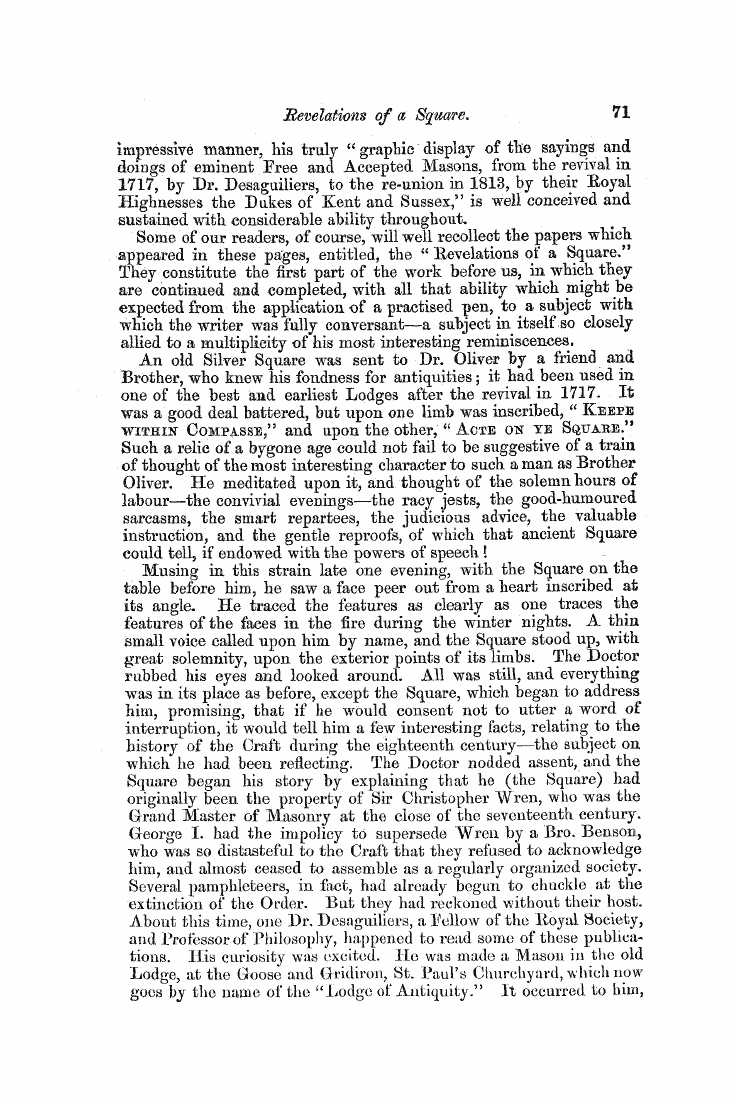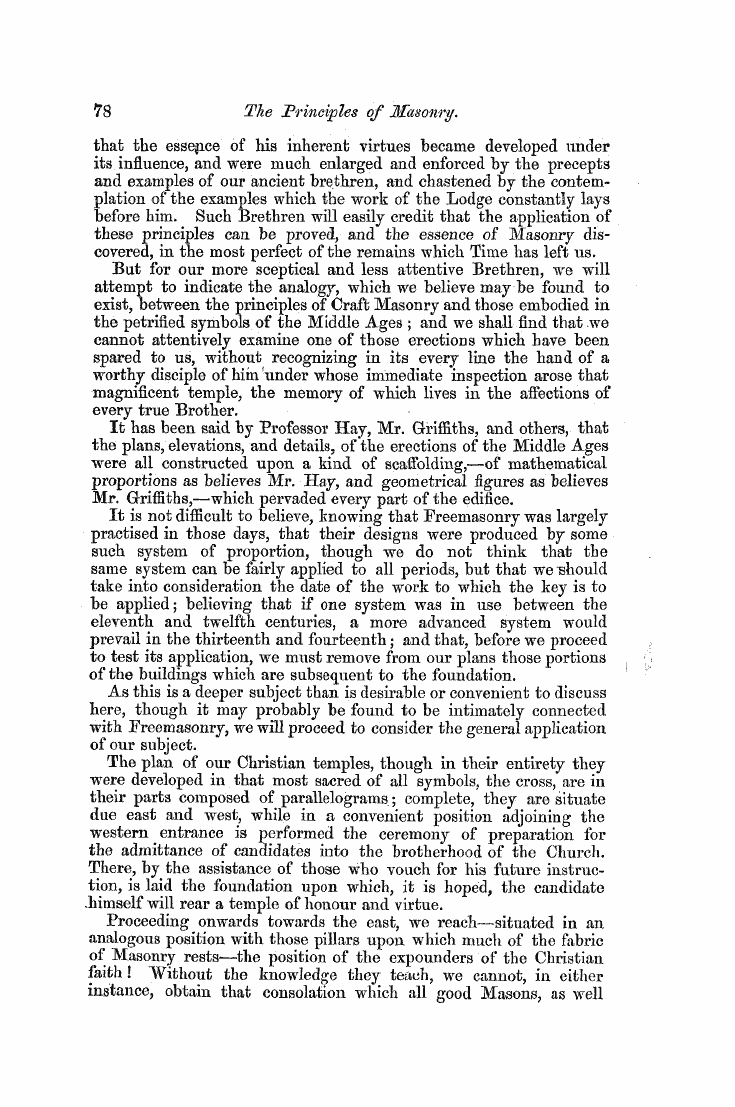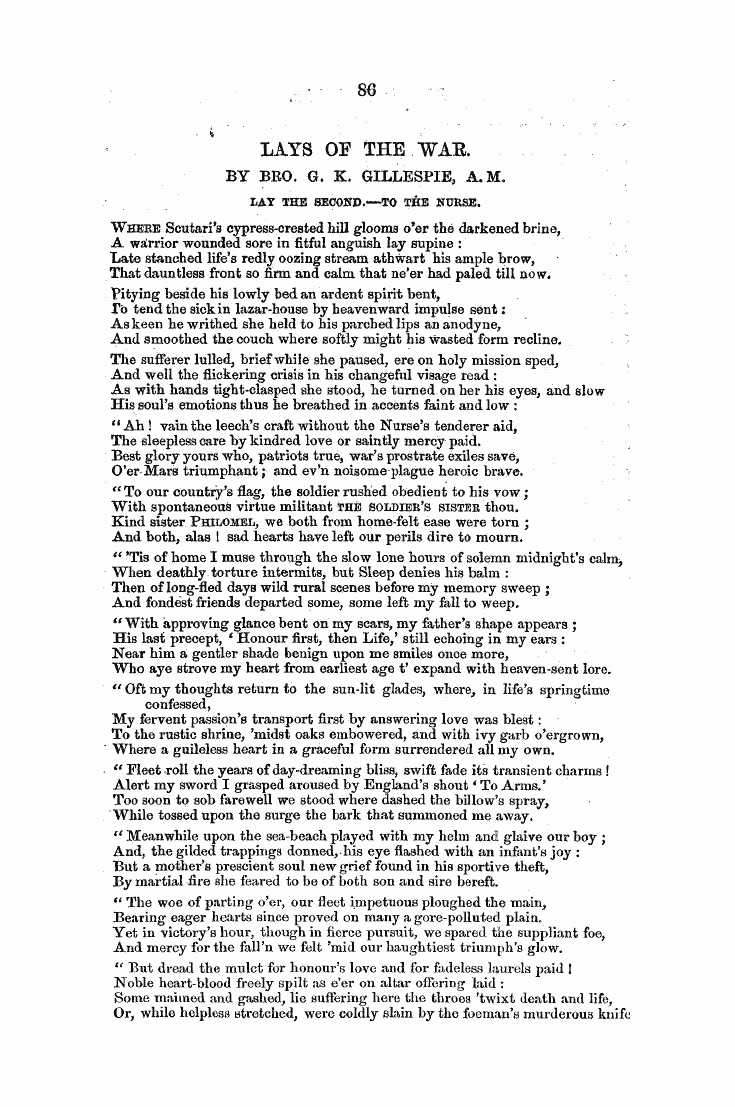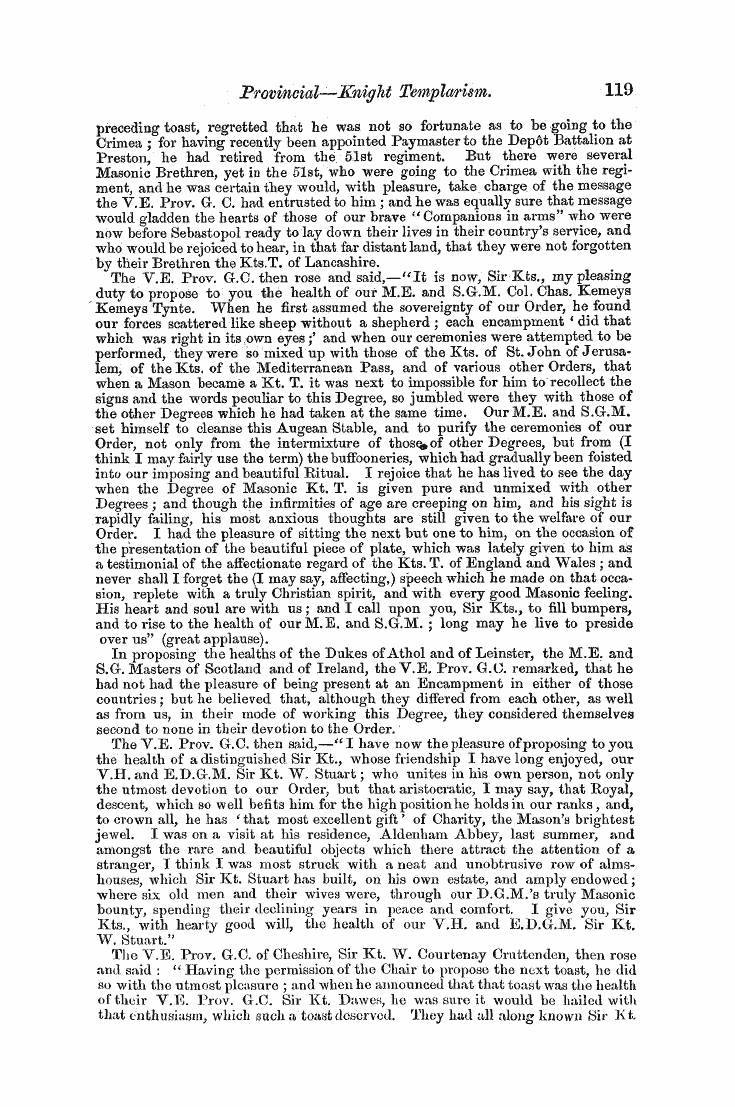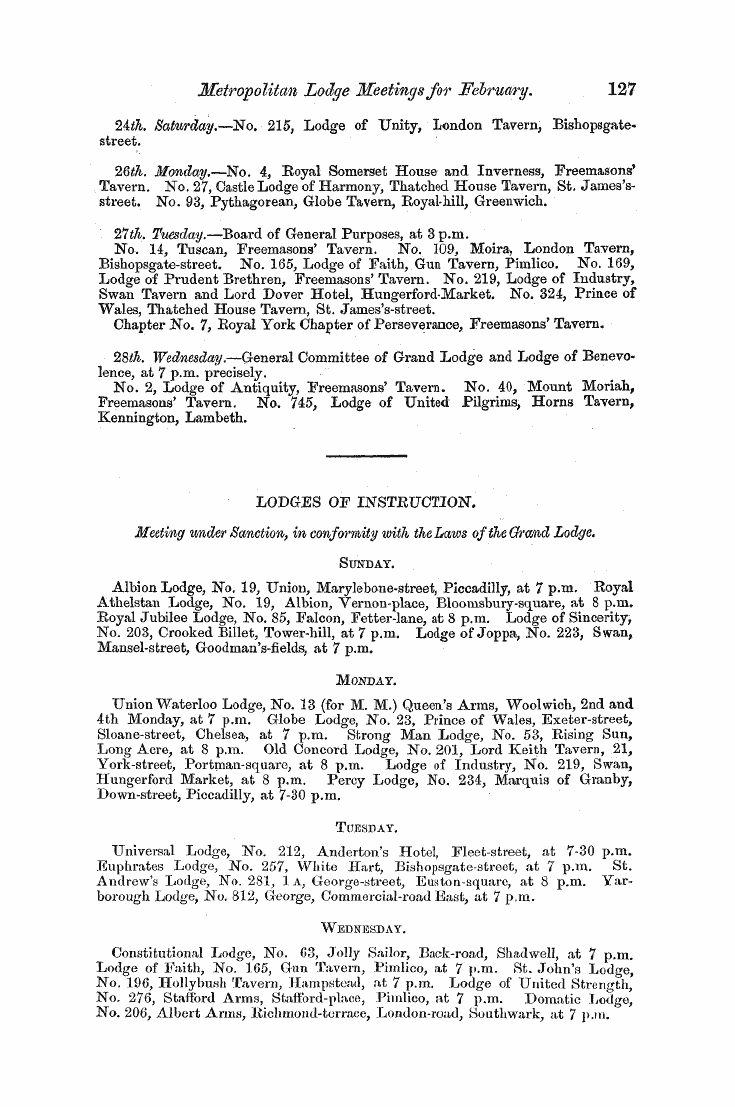-
Articles/Ads
Article Untitled Article ← Page 4 of 5 →
Note: This text has been automatically extracted via Optical Character Recognition (OCR) software.
Untitled Article
western fronts ^ of our Cathedrals and larger conventual and abbey churches , some further analogy may be found ; while the pinnacle which surmounts the flying buttress , and by its great specific gravity keeps the whole in repose , must be of especial interest to the Craft . In the parapet and string-courses , too , we may discover much that belongs to Preemasonry , both being freely covered with sculptured
emblems that will repay the attentive examination of an inquiring mind . That national humour , and love of caricature , which , in our days , finds vent in the pages of a facetious weekly contemporary , and in the last century was depicted by the pencil of an illustrious painter , in the Middle Agei forced itself upon the attention of the multitude
from numberless points and curious positions on the walls and furniture of our sacred edifices . "We have no doubt that many of the illustrious characters of those days have had their salient points gibbeted in a manner not flattering to their vanity , though strongly embodying the opinion of their merits which possessed the mind of the sculptor .
There was much scope for action of this kind in those days . The princely revenues of the Church were actively employed in extending her influence ; new edifices were continually arising , and older ones as continually receiving additions and embellishments , which were seldom , if ever , mere restorations of the parts which had fallen into decay . And though the events which were caricatured were of too little importance to be chronicled , or have passed from our history ,
we feel that the embodied remains of the wit of those ages has still sufficient interest to repay examination . "When . we look at these works in that light , we may detect in the features of the individual who , with distended mouth , is discharging the drainage of the roofs , perhaps the image of one whom the
sculptor thought a fitting subject for ridicule ; a little farther , we see the carver ' s devotion breaks out in the figure of an angel , perhaps as some atonement for polluting the walls of the sacred edifice with such an image as we have previously conceived , —or he exhibits his horror of some demon , by gibbeting the phantom which has haunted him while suffering from indigestion , or a fit of the " blues ; " and then proves his love for the beauties of nature by
seeking to embody his sense of her bounty in a representation of some favourite flower . Again , the representation of the distorted figures to be met with in string-courses may be intended to represent , or symbolically to exhibit , the incidents which continually occur , and which not unfrequently sever that bond of love and harmony which the string-course aptly represents .
In the choir of these temples , symbolic representations of Christian and Masonic virtues were frequently sculptured ; while in the painted decorations which usually adorned this portion of the edifice , they were abundantly placed ; the most frequent being the double triangle , which is said to be one of the most sacred of symbols , and typical of the Trinity .
Note: This text has been automatically extracted via Optical Character Recognition (OCR) software.
Untitled Article
western fronts ^ of our Cathedrals and larger conventual and abbey churches , some further analogy may be found ; while the pinnacle which surmounts the flying buttress , and by its great specific gravity keeps the whole in repose , must be of especial interest to the Craft . In the parapet and string-courses , too , we may discover much that belongs to Preemasonry , both being freely covered with sculptured
emblems that will repay the attentive examination of an inquiring mind . That national humour , and love of caricature , which , in our days , finds vent in the pages of a facetious weekly contemporary , and in the last century was depicted by the pencil of an illustrious painter , in the Middle Agei forced itself upon the attention of the multitude
from numberless points and curious positions on the walls and furniture of our sacred edifices . "We have no doubt that many of the illustrious characters of those days have had their salient points gibbeted in a manner not flattering to their vanity , though strongly embodying the opinion of their merits which possessed the mind of the sculptor .
There was much scope for action of this kind in those days . The princely revenues of the Church were actively employed in extending her influence ; new edifices were continually arising , and older ones as continually receiving additions and embellishments , which were seldom , if ever , mere restorations of the parts which had fallen into decay . And though the events which were caricatured were of too little importance to be chronicled , or have passed from our history ,
we feel that the embodied remains of the wit of those ages has still sufficient interest to repay examination . "When . we look at these works in that light , we may detect in the features of the individual who , with distended mouth , is discharging the drainage of the roofs , perhaps the image of one whom the
sculptor thought a fitting subject for ridicule ; a little farther , we see the carver ' s devotion breaks out in the figure of an angel , perhaps as some atonement for polluting the walls of the sacred edifice with such an image as we have previously conceived , —or he exhibits his horror of some demon , by gibbeting the phantom which has haunted him while suffering from indigestion , or a fit of the " blues ; " and then proves his love for the beauties of nature by
seeking to embody his sense of her bounty in a representation of some favourite flower . Again , the representation of the distorted figures to be met with in string-courses may be intended to represent , or symbolically to exhibit , the incidents which continually occur , and which not unfrequently sever that bond of love and harmony which the string-course aptly represents .
In the choir of these temples , symbolic representations of Christian and Masonic virtues were frequently sculptured ; while in the painted decorations which usually adorned this portion of the edifice , they were abundantly placed ; the most frequent being the double triangle , which is said to be one of the most sacred of symbols , and typical of the Trinity .


